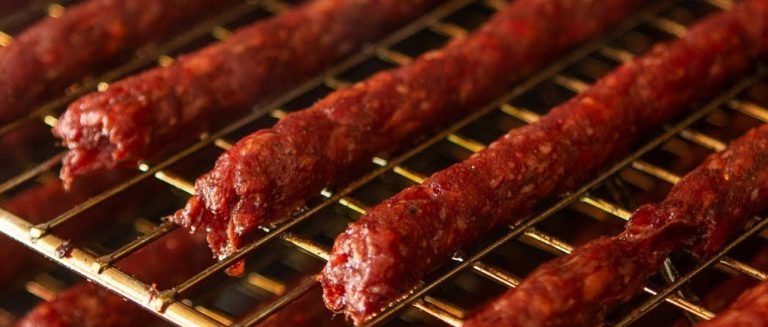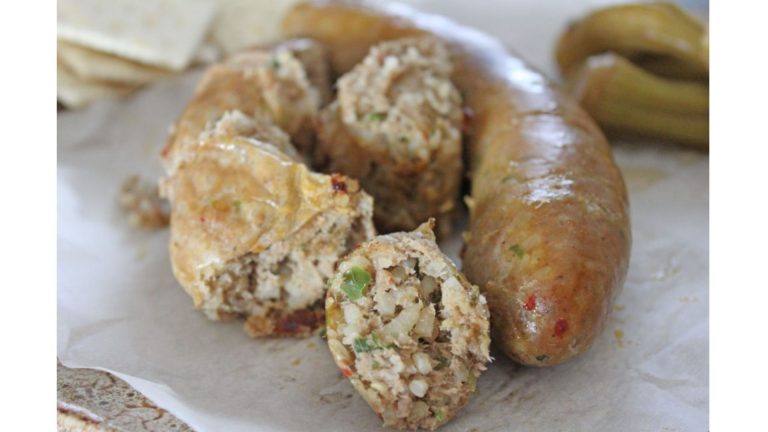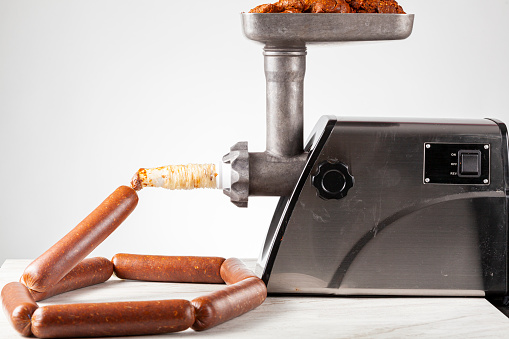Should I Season Sausage Before or After Grinding the Meat?
Seasoning is applied before grinding, as grinding breaks down the meat fibers and toughens the texture.
This is what most people say. Yes, it is right. But you can go in any direction like seasoning the sausage before grinding or seasoning the sausage after grinding.
You can add spices to your meat and then grind it. Or, you can grind the meat and add the spices to it. Read this article for more information.
Table of Contents
Seasoning for Making Sausages
The advantage of making your sausage at home is that you can use whatever you want.
You can use ground herbs and spices like coriander, thyme, fennel, etc, Whole herbs and spices can be used, like black pepper, yellow mustard seed, etc.
Very popular seasoning blends:
- Andouille: garlic, cayenne, thyme, and paprika(all have a smokey flavor)
- Hot Italian: black pepper, crushed red pepper flakes, cayenne, paprika, sea salt, fennel seed, garlic, parsley
- Sweet Italian: sea salt, fennel seed, brown sugar, coriander, caraway, black pepper, crushed red pepper flakes
- Chorizo: cumin, clove, coriander, bay leaf, oregano, thyme, cinnamon, garlic, sea salt, peppercorns, paprika, Ancho chile powder, apple cider vinegar
Salt is a component of your seasoning to add flavor to your sausage. Kosher salt and sea salt are the most commonly used salt for homemade fresh sausage.
If you’re going to cure your sausage, you’ll want to add curing salt. Sausage making involves the use of curing salts called Cure 1 and Cure 2.
Cure 1 has 6% of sodium nitrite and 97% of salt. Cure 2 has 6% of sodium nitrite, 1% of sodium nitrate, and 93% of salt.
Should I Season Sausage Before or After Grinding?
There are two main situations to consider here:
- You can cube the meat, mix in the salt and spices, rest the seasoned cubes in the refrigerator, and then grind.
- Grind the meat first and then mix in the seasoning (Sausage makers will mix the salt and spices in with water, beer, or whatever liquid you choose).
Seasoning Meat Before Grinding
Pros
Salting the meat before grinding and allowing it to sit in the refrigerator for up to 48 hours allows for more myosin to be removed from the meat, according to some home sausage makers.
The help with binding is said to be helped by this. Myosin is the main ingredient in muscle and the part of the animal that is turned into meat for food.
Sausage is a mixture of meat, fat, and water distributed amongst each other, and myosin acts as a binder for it.
It helps firm up the meat by stabilizing the three components. When we add salt to meat and let it rest, it brings out the myosin and allows it to act as a binder.
In meat where salt hasn’t been added, the myosin stays deep in the tissues, and therefore, its binding action doesn’t happen.
Many home sausage makers agree that when you have good binding, you will get firmed sausage meat, and you will get a clean grind when you push it through a meat grinder.
Binders can help with texture, make sausage slices more smoothly, make sausage moister, and help with water retention to prevent the sausage from drying out.
Some say that the seasoning-before approach helps with the distribution of spices and that spices can mix better during the grinding process.
If you want to use whole herbs or spices like bay leaves, mustard seed, or peppercorn, that add distinct flavor but aren’t pleasant to eat, there is another reported benefit.
If you mix bay leaves with the diced meat, you can put it in the fridge to impart the flavor to the meat.
When you are ready to grind, you can remove the leaves, and then grind and stuff the sausage.
Cons
The meat grinder can get messier if the seasoning is done before grinding.
You have to clean your meat grinder between uses, but you might have more cleaning to do if you are using seasoning plus cheese, oil, or something else.
Some people don’t notice any difference in flavor or texture, despite all of the benefits of binding.
Seasoning Meat After Grinding
Pros
The seasoning-after approach is used by a lot of people and they get more than satisfactory results.
It is easier to get good coverage with salt and seasoning once the meat is ground, according to many people.
If you increase the surface area by grinding, you can impart the flavor of the seasoning and cure it faster.
Cons
Some people find that the sausage meat is mushed up when they mix in seasoning after grinding.
They end up getting a texture similar to a hot dog, which is not ideal for most. A juicy sausage with lots of texture is what most people like to eat.
More people probably don’t experience it because it isn’t something everyone experiences.
It can be a lot of different things, including how you mix the meat, the amount of liquid used, the amount of fat used, and more.
With an increased surface area the bacteria have more surface area to develop.
This shouldn’t be an issue if you’re grinding the meat, then immediately stuffing the sausage and then cooking it or letting the stuffed sausage set in the refrigerator for a while.
It’s more of a problem if you allow ground meat to sit and be exposed to air, which increases its risk of being contaminated by bacteria.
Conclusion
When it comes to the question of if you should season sausage before or after grinding, there are an equal number of pros and cons for either approach.
A lot of this is personal opinion based on personal experiences.
An in-between approach of doing an initial coarse or medium-coarse grind, adding the salt and spices, and then re-grinding through a fine plate on the meat grinder is also available.
It is not possible to do it the right way. I think you should experiment with both and see which one you like the best.

Foodie and a passionate cook, I am here to share all of what I know about cooking, kitchen, and food prepping.
Follow me for delicious and healthy recipes.






